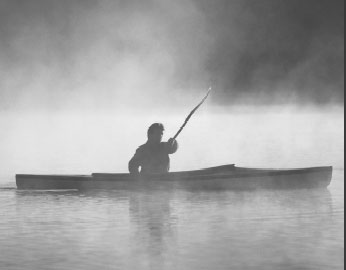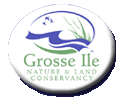

Vol. 13 No. 3
In this issue...
Reflections from the President
2004 Raptor Banding in the Grosse Ile Nature Area
A College Student's Survey of Bugs in Our Nature Area
Your Conservancy Quietly in Action
13th Annual Meeting Saturday, November 5 10AM
Upcoming Events...
November
5
Annual Meeting
10:00AM
- Noon
Centennial Farm
Fall
Hours
Nature Area Open
Saturday 10:00AM
- 2:00PM
Thursday 5:30PM - Dusk
Closed when raining
Last Day Open - October 29
A
College Student's Survey of Bugs in Our Nature Area
by Marilyn
Dexheimer
 |
|
Tamar
Dexheimer, senior at Kalamazoo College, does a water quality survey
at the Nature Area.
Photo by Marilyn Dexheimer |
The Nature Area is more than just a piece of land available to the public at certain hours. There is a value that is beyond a price tag. It is a teaching tool for kids, our future caretakers, who do not know anything about the environment, such as the DelRay kids. Many people conduct projects at the Nature Area and each can tell us a little more about the environment, such as Tom Carpenter’s work with hawks. These projects are not always advertised and sometimes remain hidden.
One of the projects this summer was an estimation of water quality by Tamar Dexheimer, a senior at Kalamazoo College. The water quality survey allowed her to conduct original research, fulfill a graduation requirement, and provide the GINLC with valuable information on aquatic life in the Nature Area. The research focused on aquatic bugs (technically, macroscopic invertebrate bioindicators) at the Nature Area, with permission from GINLC.
Macroscopic invertebrates are insects and other small organisms, which can be seen (barely) with the naked eye. Bioindicators are organisms, which are sensitive to some aspect of the environment, in this case water quality. The more of them in an area, the healthier the water is. Some invertebrates can live in water no matter what is done to it. Others are more sensitive and any change of the environment will cause them to die off. Not all organisms are bioindicators. The water critters collected were keyed out to identify them. There are 3 kinds of bioindicators. The pollution-sensitive ones are organisms that are found only in “clean” or “good” quality water. The second one is moderately pollution tolerant bioindicators, which can live in water that is “moderately” polluted or “fair” quality water. Finally the last category is tolerant; these tough organisms can survive in polluted waters.
The sites were Quarry pond, Seaplane Base, Bay View, Humbug Island, and the Marsh by the observation deck. No survey of aquatic critters has ever been done at the nature area so it was all new ground. Tamar has always been one of those kids that played in every mud puddle she found. She just plain likes to play in the mud so it was no surprise that she choose a project involving water and mud. I viewed it that she upgraded her mud puddle to marshes and ponds.
Her final paper is still being reviewed by a panel of professors and student peer reviewers, so I am only quoting one of the conclusions and omitting the details of her report, which will be in the final thesis. The results of her study are as follows: “Using EPA guidelines for bioindi - cator characteristics, the results of the survey indicated that the locations contained mainly pollution-tolerant to moderately pollution-tolerant bioindicators with some pollution-sensitive ones present.” She will give a copy of the final report to the Conservancy in the spring. She received generous and valuable help from Barbara Leeper, Bruce Jones and Ingo Hasserodt from the Conservancy, Emily Durany a graduate student working part time with the EPA, and two of her high school teachers, Mr. Richards and Mr. Bennett.
